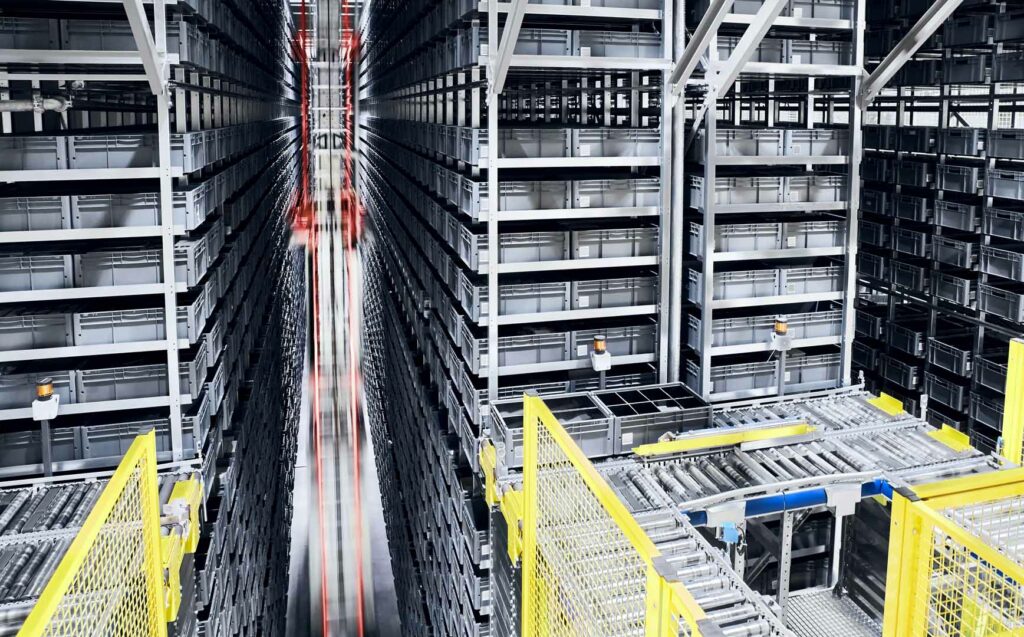
Robotic systems and automation are often thought to be the next steps for warehouse operations. This is because businesses are looking for ways to improve productivity and efficiency while reducing costs and going hands-free on labor-intensive tasks.
But what does this mean exactly? How are these robotic systems and automated features manifesting themselves this year and beyond? Discover more as we look at some of the latest trends in warehouse automation.
Automation in the warehouse and distribution center sectors is nothing new and has been around for a number of years already. However, we are looking towards a new phase in the development of robotic solutions – augmented intelligence. This is going to be an important trend in warehouse automation in the years to come.
Basically, rather than just using robotic solutions to automate time-consuming tasks, personnel will start to work alongside smart machines and systems. They will collaborate on tasks as automated systems become increasingly intelligent. Collaborative robots are changing the way we approach warehousing operations and redefining the roles of warehouse workers in these environments.
Data is critical to the design, development, and deployment of robotic systems. This has always been the way, right from the humble beginnings of automation solutions,. Teams sought to utilize empirical insight to improve efficiency and productivity. However, in 2022, big data is coming in thick and fast. Businesses need to be able to manage and wield this data effectively.
Increasingly, the deployment of cloud-based platforms is becoming one of the key trends in warehouse automation. Automated systems can operate with a degree of autonomy. However, there still needs to be an interface via which human teams can manage automated processes and monitor operations.
This platform also needs to collect data from automated solutions. This data will be used in maintaining and upgrading the solution further down the line. The cloud-based, remote element also makes it easier to manage and coordinate processes across multiple sites, drawing upon data delivered in real-time.
One of the key automation trends in warehouse operations is a conceptual one. Facility management teams are moving away from the idea of automation as a monolithic entity. They are instead considering the individual applications of different forms of automation.
Automation can be separated into two broad categories – digital automation and physical automation. Companies of all kinds can harness the power of digital automation. However, warehousing operations need to expand their focus to cover both categories.
This means automating digital processes – such as project management, fundamental customer care, and scheduling – as well as physical tasks like picking and packaging. These forms of automation may be developed and deployed separately. However, they will need to integrate with one another as part of a company-wide system.
Retrieval and storage require optimized reliability and predictability. Errors in these processes can be difficult to put right and may end up costing the business further down the line. With this in mind, automated storage and retrieval systems are becoming a key focus in the development of robot technology.
With these systems in place, businesses can effectively eliminate the risk of error. The processes of product handling, picking and packaging become far more streamlined and cost-effective. As a result time, effort, and resources are saved right across the supply chain.
Automation dramatically improves efficiency in warehouse operations and right across the supply chain. This is achieved by taking time-consuming and repetitive processes out of the hands of human operators. Then robots and automated systems take over, resulting in more predictable results and better reliability.
In addition, teams are free to apply their skills in other areas of business. Rather than replacing human personnel, automation releases these teams for other roles. Businesses are able to redeploy their workforce in tasks that are better suited to their skills. This, in turn, results in better support for – and morale among – these human staff members.
Advances in robotic technology are leading to new business models in the industry. Warehouse facility managers need to do more than simply purchase and deploy a piece of autonomous technology or warehouse management system (WMS).
They need to maintain, repair, update, and replace this technology when required. Organizations may also have project-specific requirements when it comes to automation. They may find it more cost-effective to lease technology when it is required rather than invest in a solution outright.
This necessitates more flexible automation services, giving rise to products such as Robotics as a Service (RaaS). Clients are able to access the robotic technology they require when they require it. Plus they are connecting with managed solutions such as ongoing predictive maintenance, operation, and upgrades.
Organizing teams and solutions on the warehouse floor is traditionally been something of a headache for facility managers. Transportation solutions need to be operated by human personnel, which means resources need to be redirected.
At the same time, the business must ensure the highest levels of security and safety across the entire facility. This leads to an intensive process of management. Autonomous mobile robots, or AMRS, eliminate many of these difficulties.
Smart robots utilize sensor technology to make sense of their environment. This allows them to move between locations in an efficient manner without compromising on safety. This is useful across a broad variety of applications. AMRs can be used for goods transportation around the warehouse space and deployed on cleaning, maintenance and other tasks.
Looking to harness the power of warehouse automation systems within your own facility or perhaps take warehouse automation to the next level? Reach out to our team of industrial automation experts today. We’ll help you develop a comprehensive strategy for your business, incorporating the latest automation technologies that will make an impact on your bottom line.